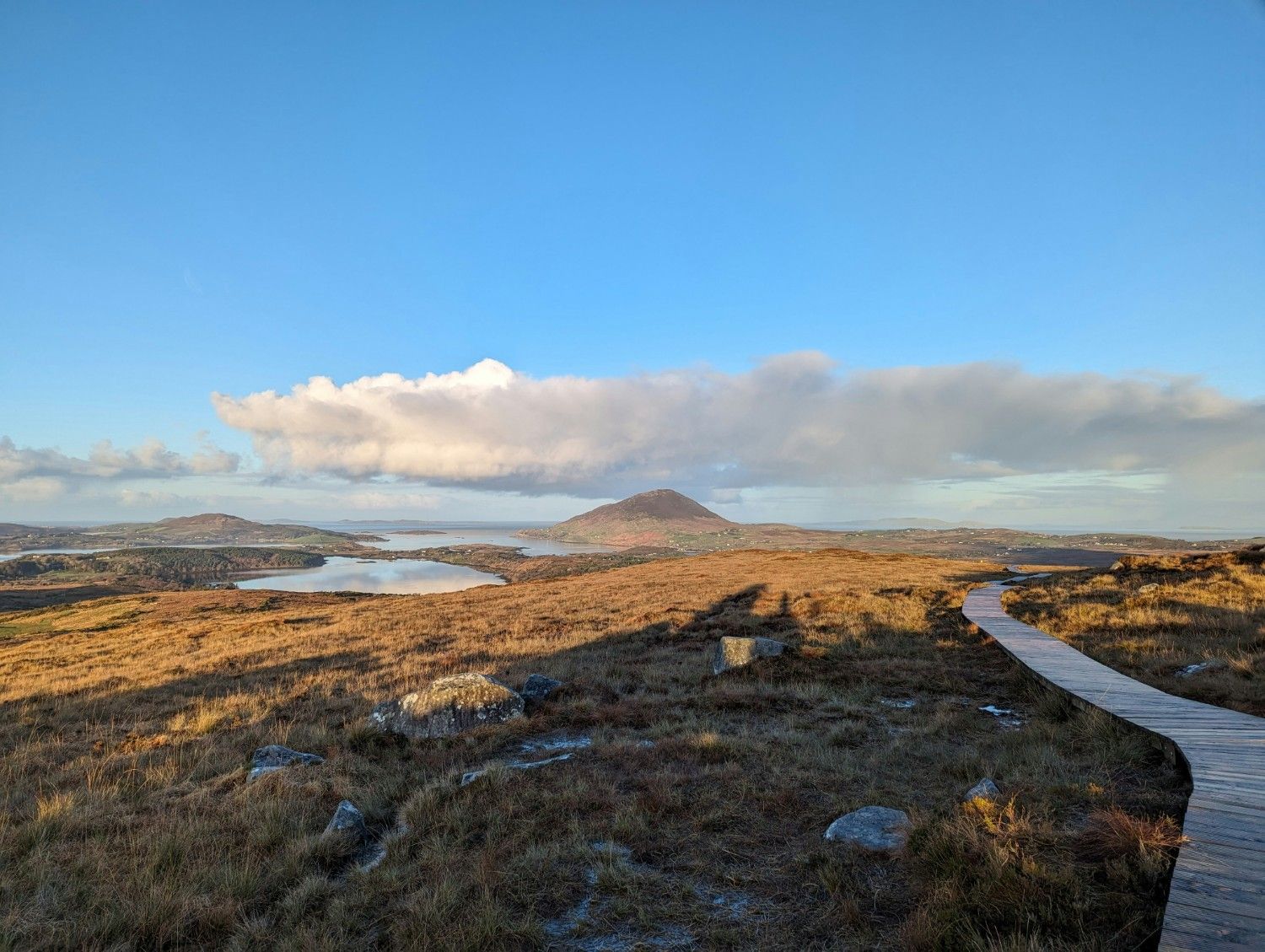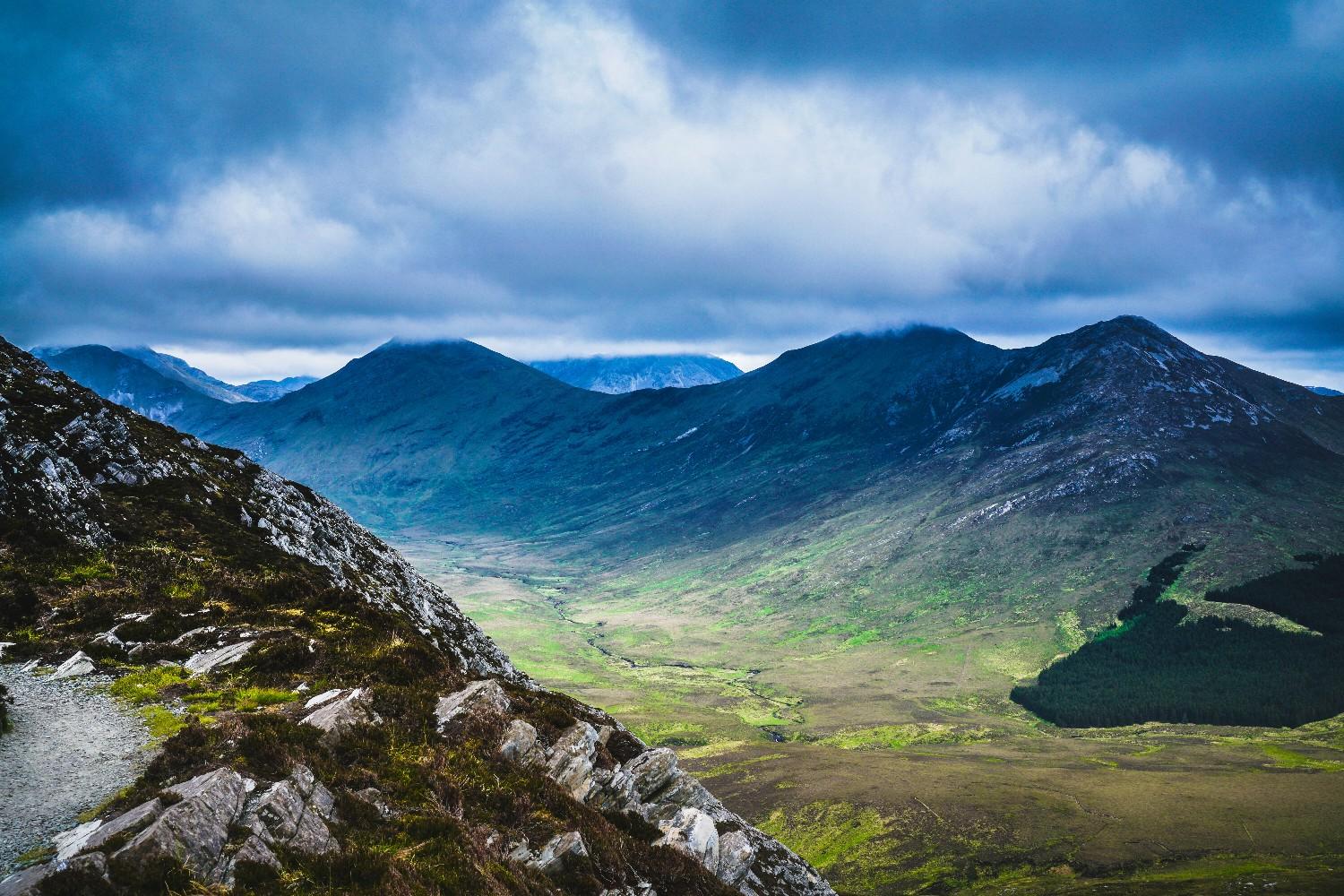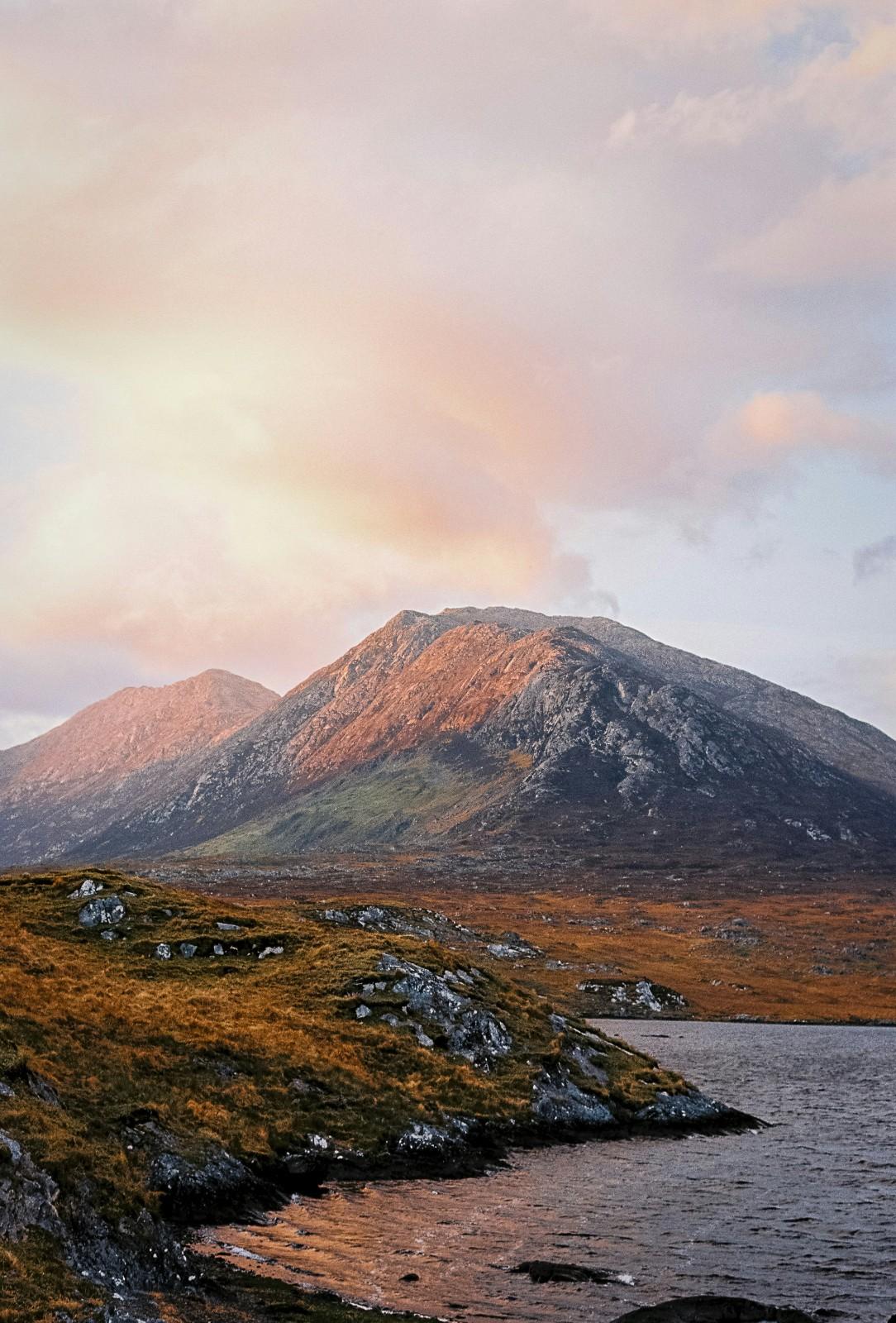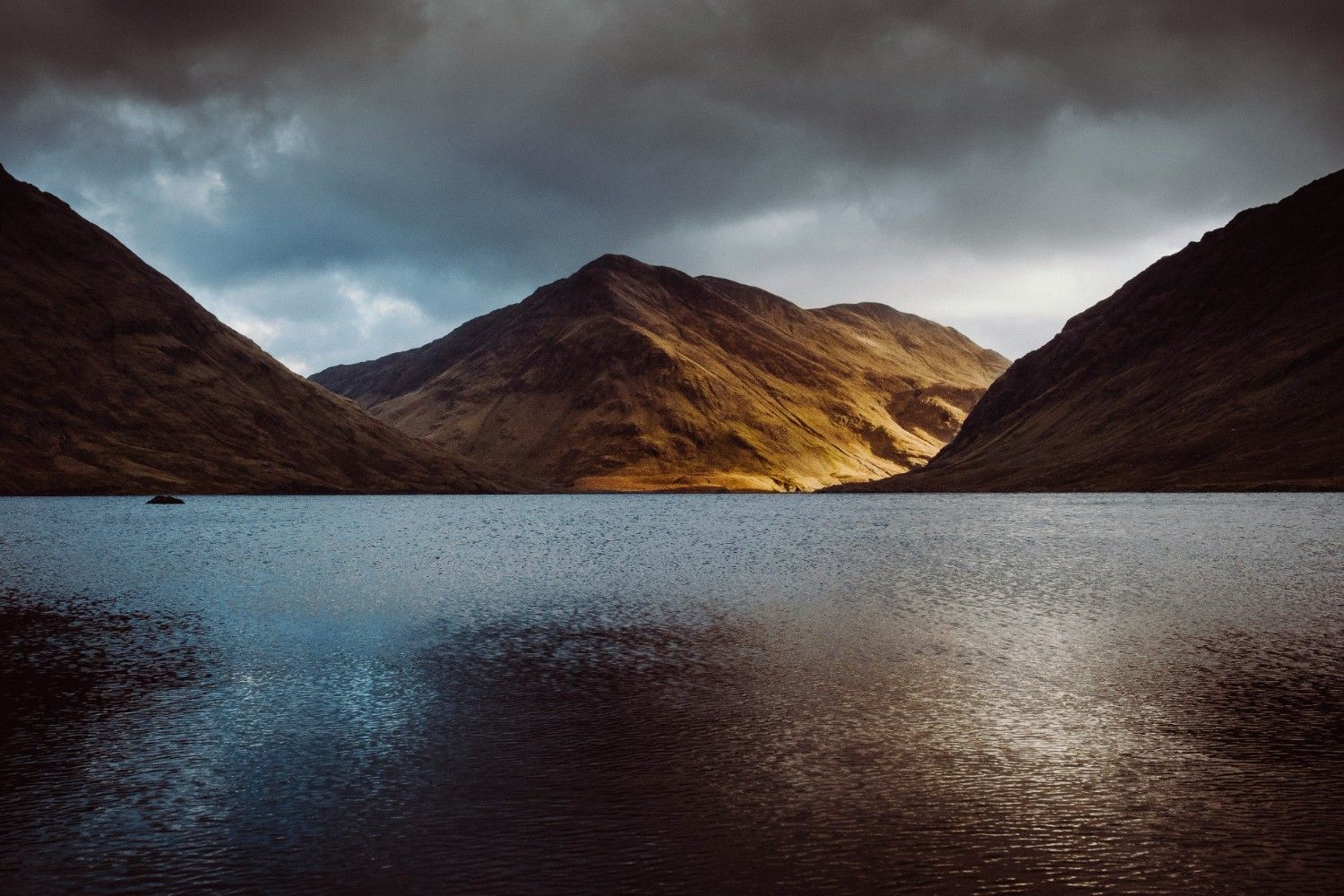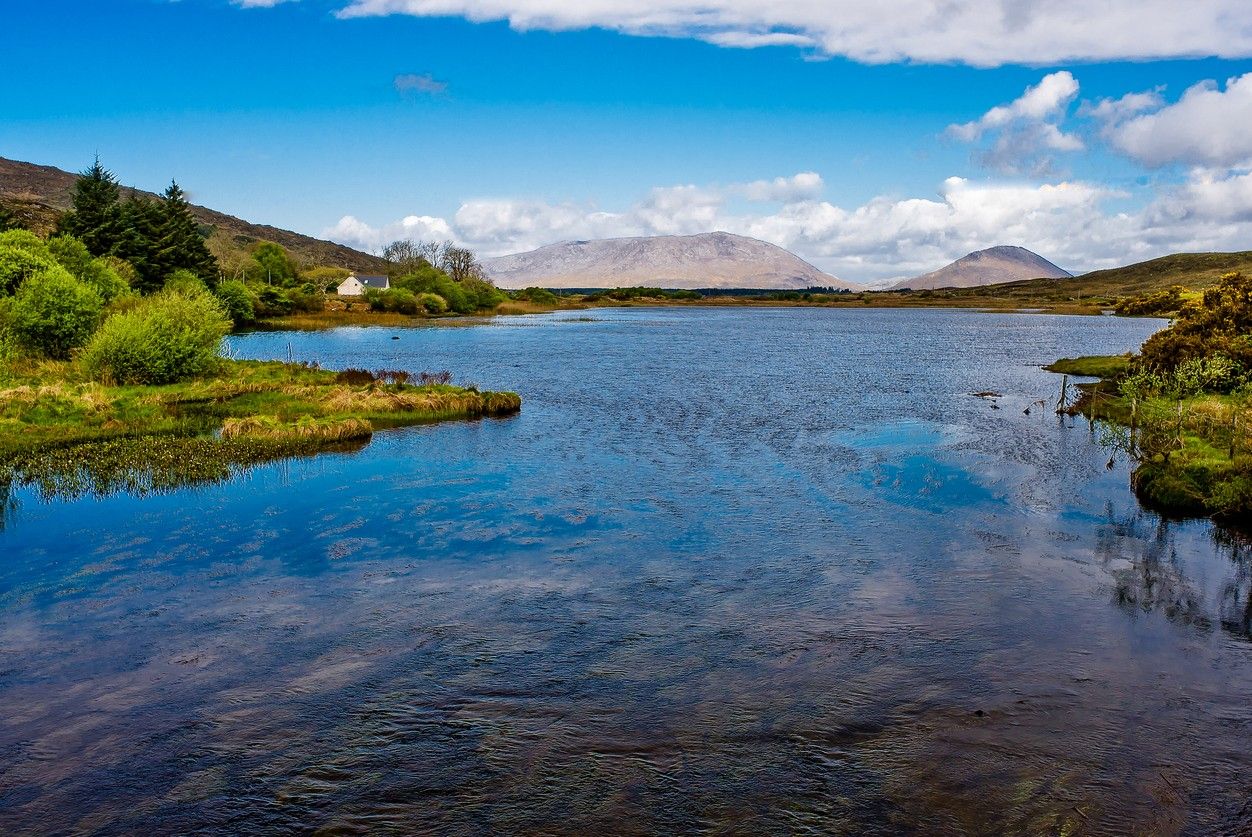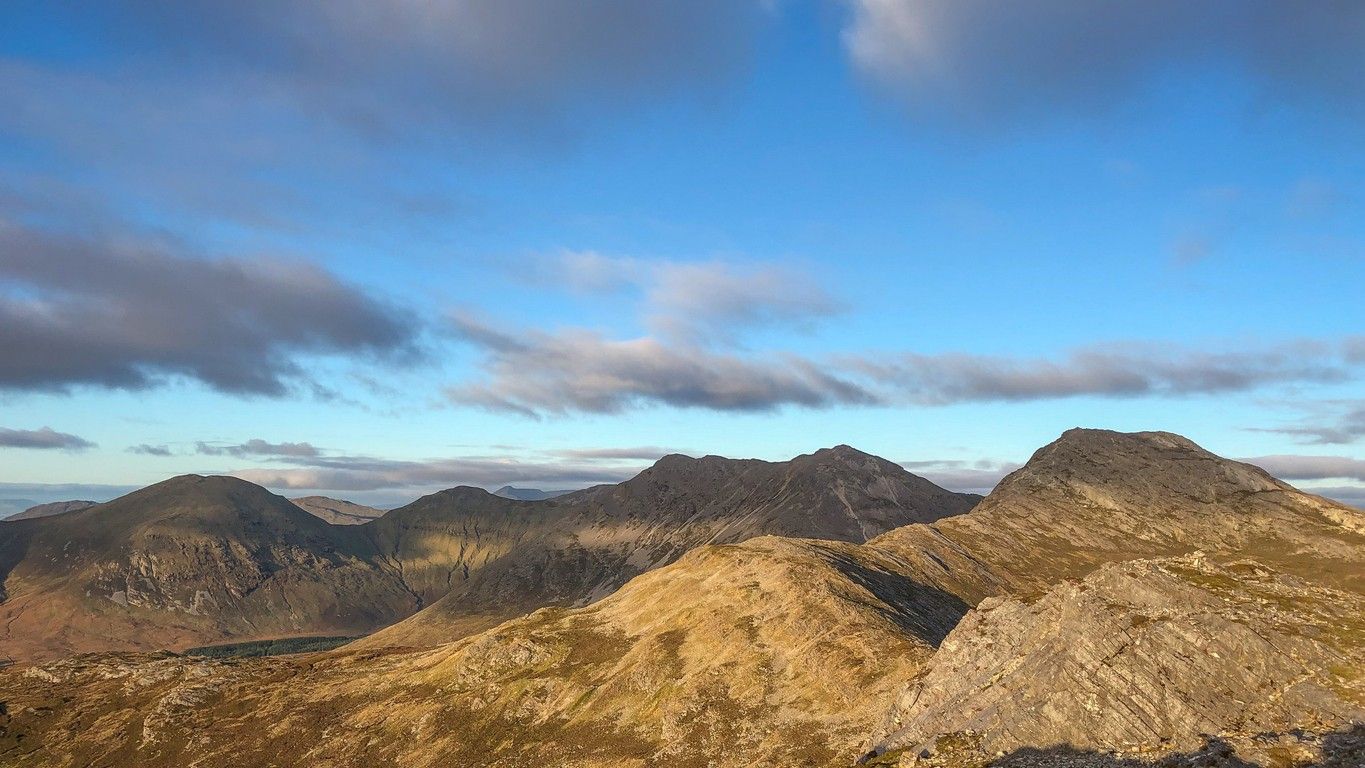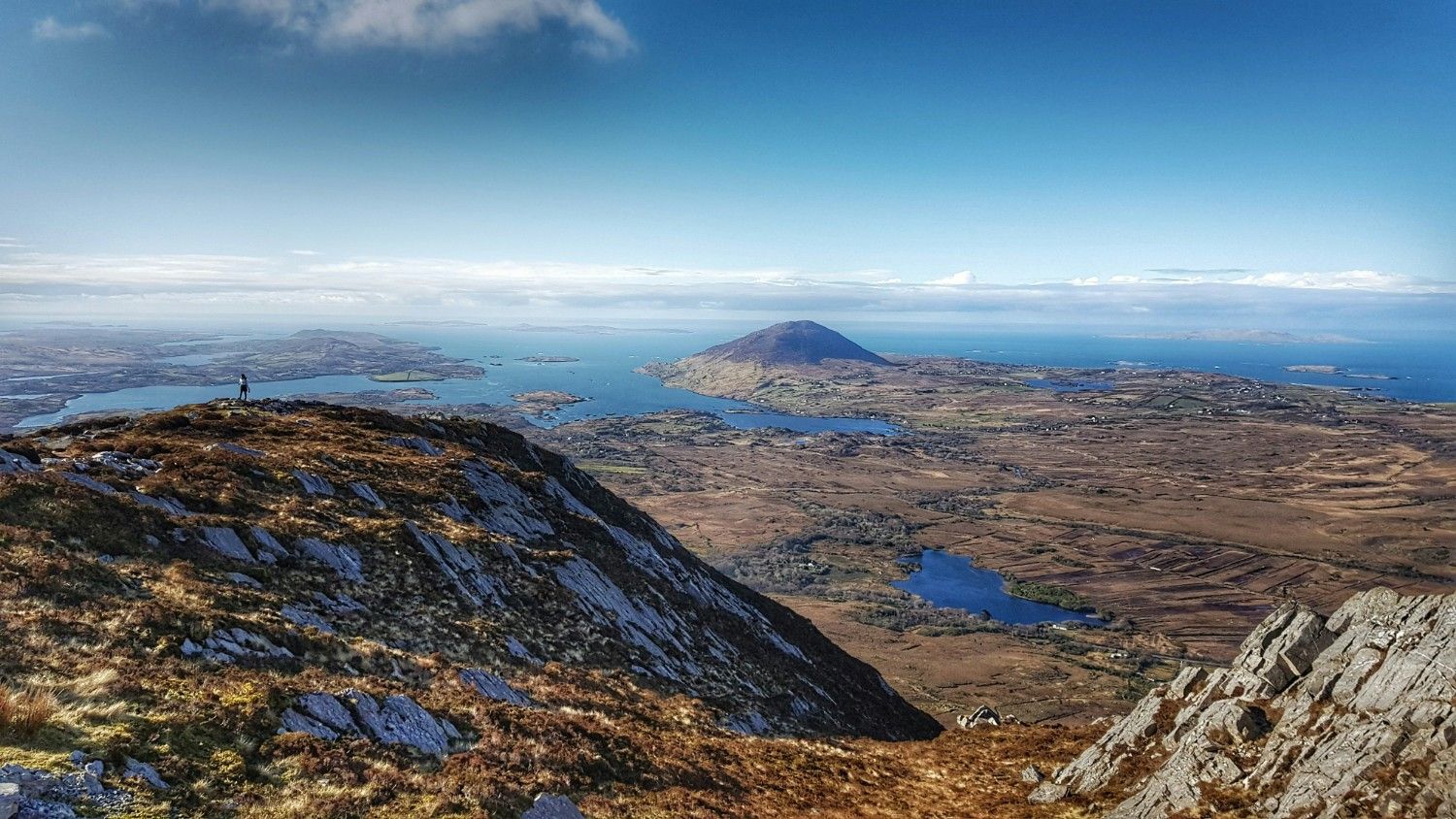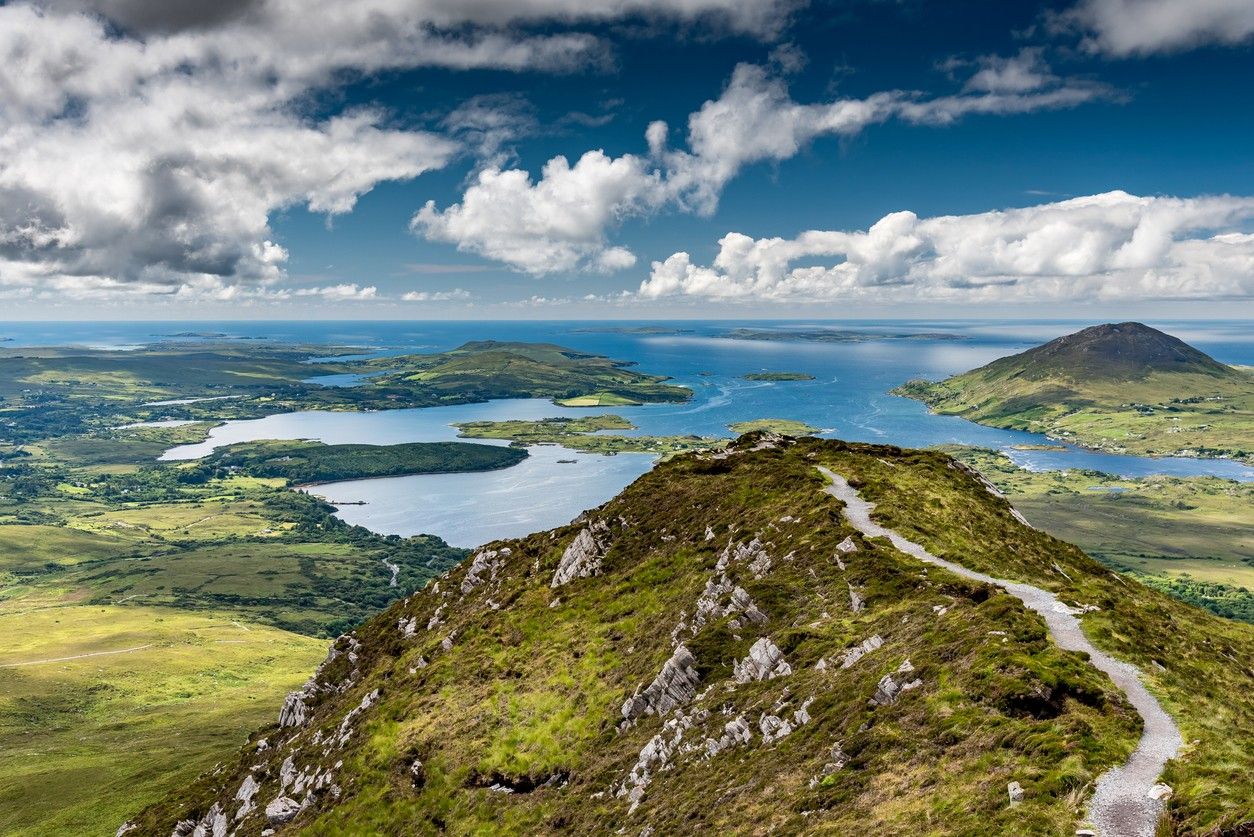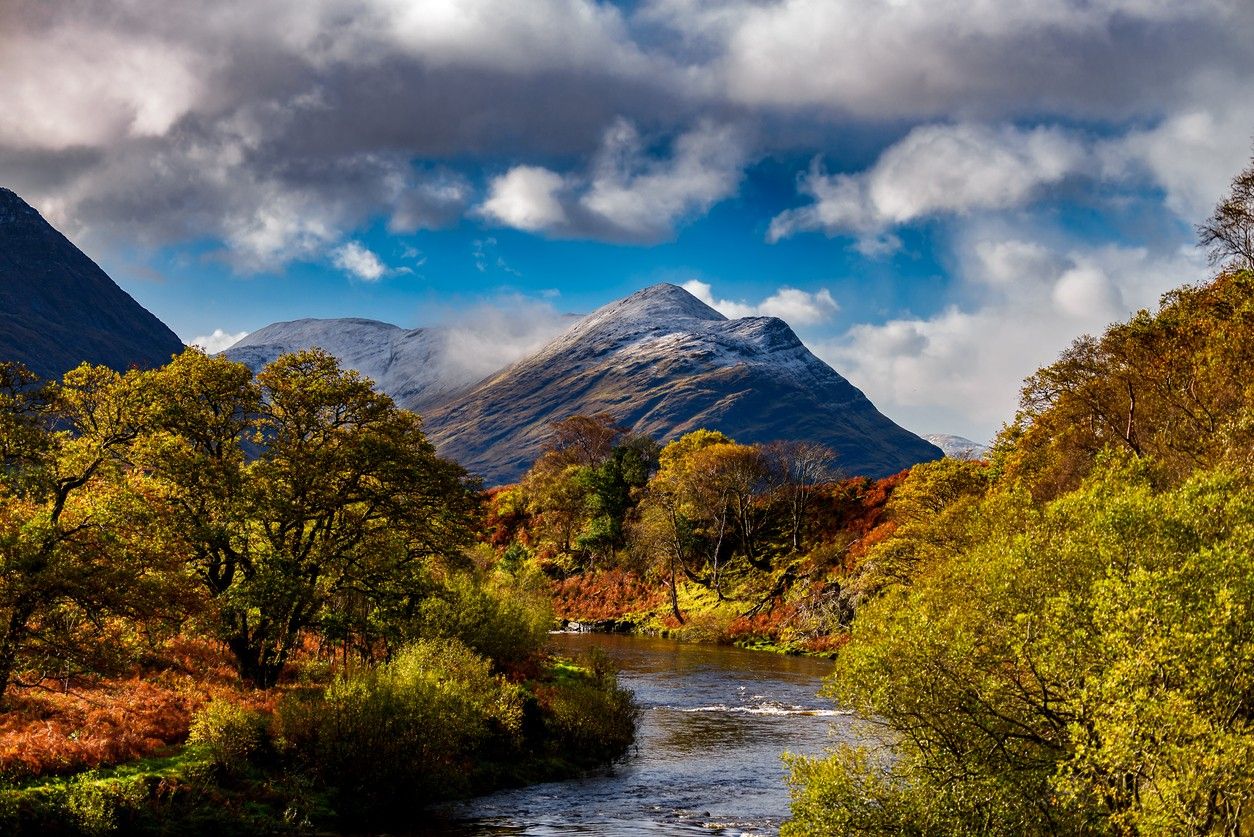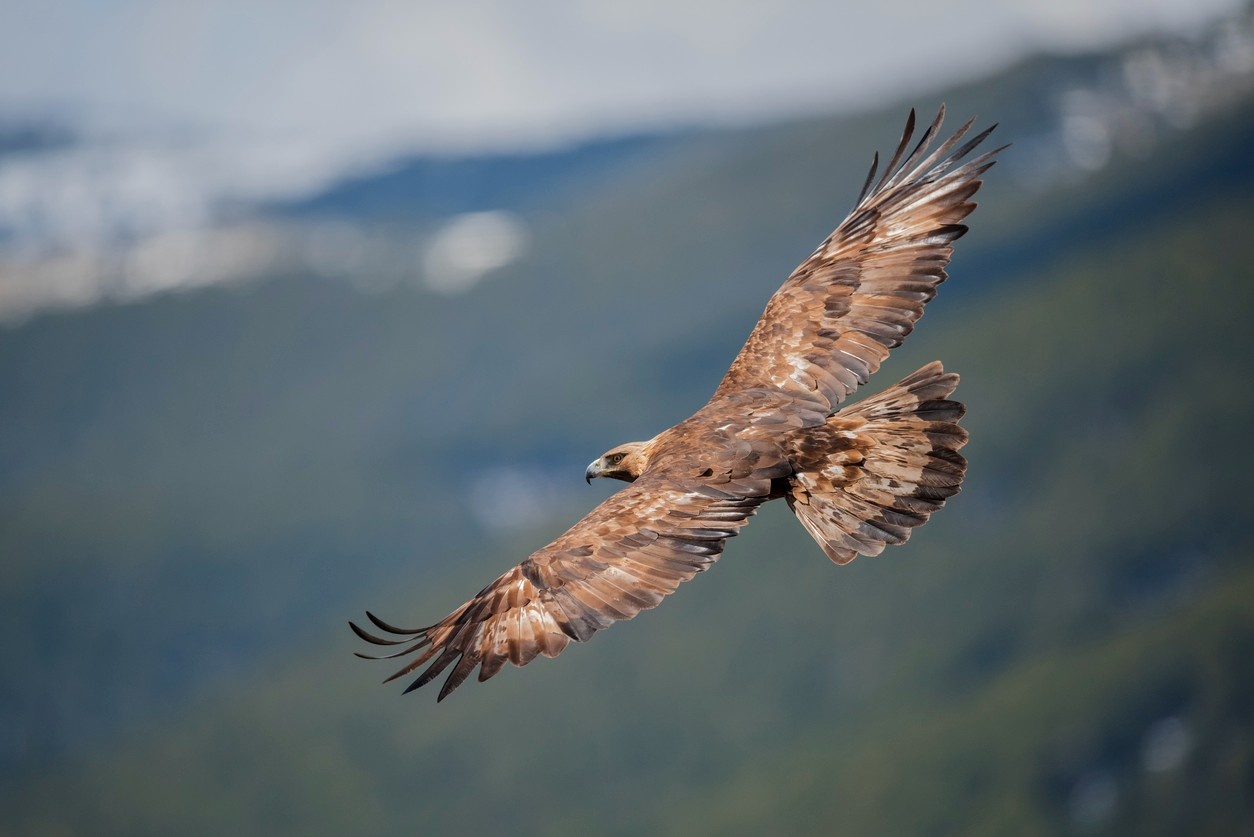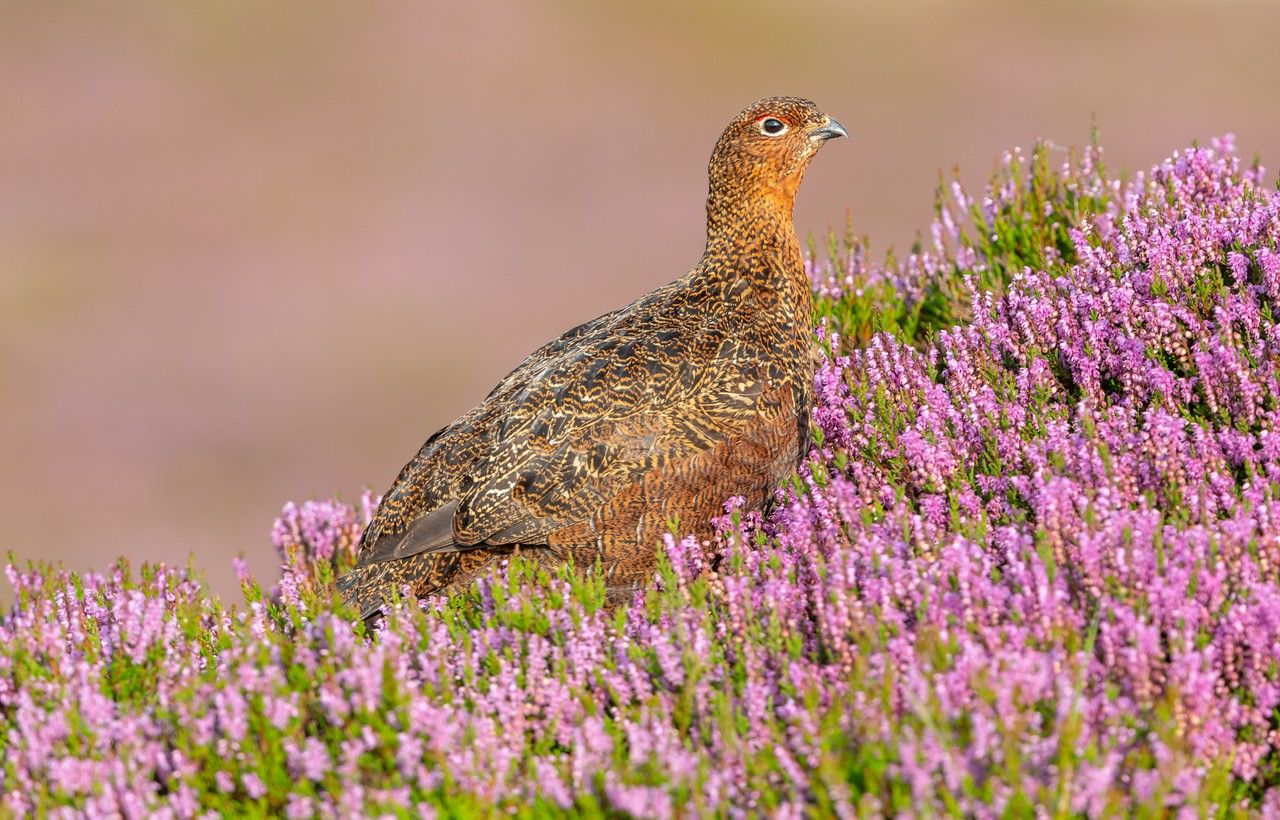Connemara National Park is a breathtaking natural treasure nestled in the rugged landscape of County Galway, Ireland. Established in 1980, this park encompasses over 7,000 acres of pristine wilderness, offering visitors a chance to immerse themselves in the raw beauty of the Irish countryside. Whether you seek invigorating hikes, rewarding angling experiences, or simply the opportunity to reconnect with nature, Connemara has something to captivate every outdoor enthusiast. Explore glacier-sculpted valleys, spot iconic wildlife like golden eagles and red deer, and lose yourself in the park's rich tapestry of biodiversity.
Unforgettable Experiences in Connemara's Great Outdoors
Connemara National Park offers an array of activities and attractions that allow visitors to fully immerse themselves in the natural wonders of this stunning landscape. From invigorating hikes through rugged mountain trails to serene strolls along pristine lakeshores, the park caters to outdoor enthusiasts of all interests and abilities. Anglers can cast their lines into crystal-clear waters teeming with trout and salmon, while birdwatchers can spot a diverse array of avian species in their natural habitats.
Hiking Trails
Connemara National Park offers a wealth of activities and attractions for visitors of all ages and interests. The park boasts an extensive network of hiking trails that wind through its diverse landscapes. From gentle strolls along the shores of Lough Inagh to challenging ascents up the Twelve Bens, there is a trail to suit every level of fitness and experience. The Diamond Hill Loop is a moderate 7-kilometre hike that starts and ends at the Letterfrack village, offering stunning vistas of the park's lakes and mountains. The Bench Trail is a short 1.5 km loop around the shores of Lough Inagh, perfect for a relaxed family walk. For those seeking a challenge, the strenuous Benbaun Ridge Route takes you up to the summit of Benbaun at 729 metres, rewarding intrepid hikers with panoramic views stretching to the Aran Islands.
Other popular hiking trails include:
Sruffaunboy Nature Trail (2 km loop through woodlands, heathland and bogs)
Glencoaghan Horseshoe (13 km strenuous hike around the Glencoaghan valley)
Derryclare Nature Trail (4 km loop around Lough Derryclare)
Letterbrock Loop (6 km moderate hike with views of the Twelve Bens)
Mine Trail (3 km easy trail exploring an abandoned copper mine)
Cashel Hill Walk (5 km moderate climb to the top of Cashel Hill)
Avian Encounters in Connemara's Natural Sanctuary
Connemara National Park is a veritable paradise for birdwatchers, with over 100 species of birds calling the park home. The park's diverse habitats, from the heathland and bogs to the lakes and rivers, attract a wide range of avian species, making it a birdwatcher's delight. Some of the most sought-after species in the park include the majestic golden eagle, which can often be spotted soaring high above the Twelve Bens mountain range. The park is also home to peregrine falcons, merlin, and other birds of prey. Wading birds like the curlew, redshank, and snipe can be found near the lakes and boggy areas. In the heathlands, you may catch a glimpse of the elusive red grouse, while the melodic song of the skylark fills the air. The park's woodlands provide habitat for a variety of woodland species, including willow warblers, redstarts, and treecreepers.
The visitor centre offers guided birdwatching tours led by naturalists who can help you spot and identify the park's feathered residents. They provide spotting scopes, binoculars, and expert guidance to ensure you make the most of your birdwatching experience. These tours are available throughout the year, allowing you to observe the park's avian inhabitants during different seasons.
Casting Lines in Connemara's Pristine Waters
Anglers will delight in the opportunity to cast their lines into the park's pristine lakes and rivers, which are home to a variety of fish species. Lough Inagh, Lough Derryclare, and Lough Pollacappul are well-stocked with brown trout, making them popular destinations for fly fishing enthusiasts. The park also offers excellent salmon and sea trout fishing in the Ballynahinch River, which flows through the park and is part of the Cashel River system. The salmon and sea trout runs typically occur from late spring through summer, allowing anglers to land these prized catches.
For those new to the sport, the park offers beginner's fishing courses and guided fishing trips led by experienced local guides. These guides can share their extensive knowledge of the park's waterways, the best spots to cast your line, and the techniques that work well in different conditions. The park operates on a catch-and-release policy for most of its waters, ensuring the sustainability of the fish populations. Visitors can obtain daily or annual fishing permits from the visitor centre, and all fishing activities are regulated to maintain the ecological balance of the park's aquatic ecosystems.
Visitor Centre and Exhibitions
Connemara National Park's visitor centre is a hub of information and educational resources, designed to enhance your understanding and appreciation of this natural wonder. Upon arrival, you'll be greeted by knowledgeable staff who can provide maps, trail guides, and recommendations tailored to your interests and ability levels. The centre features a range of interactive exhibits and multimedia displays that delve into the park's rich history, geology, and biodiversity. Through engaging presentations and hands-on displays, you'll learn about the formation of the Twelve Bens mountain range, the impact of glaciation on the landscape, and the unique ecosystems that thrive within the park's boundaries.
One of the highlights of the visitor centre is the exhibition dedicated to the park's flora and fauna. Here, you can explore the diverse plant and animal life found in the park, from the vibrant heathlands to the pristine lakes and rivers. Interactive displays allow you to learn about the adaptations and behaviours of the park's residents, such as the iconic red deer and the elusive golden eagle. In addition to the permanent exhibits, the visitor centre hosts temporary exhibitions showcasing the work of local artists and artisans. These rotating displays celebrate the cultural heritage of the Connemara region, offering visitors a glimpse into the rich traditions and craftsmanship that have shaped this part of Ireland.
The visitor centre also serves as a starting point for guided tours and educational programs. Experienced park rangers and naturalists lead a variety of tours, including birdwatching walks, geology hikes, and nighttime stargazing events, providing visitors with an in-depth understanding of the park's natural wonders.
Geology and Landscape Formation
The breathtaking landscapes of Connemara National Park are a testament to the powerful forces of nature that have sculpted this region over millions of years. From the towering quartzite peaks of the Twelve Bens mountain range to the glacially carved valleys and lakes, each feature tells a story of the park's geological history. The park's unique landforms, including cirques, corries, and moraines, offer a glimpse into the relentless march of glaciers that once covered this land, carving and shaping the terrain with their immense power. The park's bogs and heathlands, characterised by their acidic, nutrient-poor soils, have given rise to a diverse array of specialised plant life, further adding to the area's ecological richness.
The Twelve Bens and Quartzite
Connemara National Park is an emblem of nature's intricate dance, where the exquisite tapestry of landscapes unfolds a story written over millions of years. At its heart lies the majestic Twelve Bens mountain range, a geological marvel that stands as a testament to the enduring power of geological processes and climatic forces. The genesis of Connemara's captivating scenery traces back to a bygone era of tumultuous upheavals when the Earth's crust was a cauldron of transformation. Deep beneath the surface, tectonic forces collided and converged, thrusting massive slabs of rock upward to sculpt the rugged contours of the landscape we witness today. It is within this crucible of geological activity that the foundation of the Twelve Bens was laid. Composed primarily of quartzite, a resilient metamorphic rock born from the ancient sands of time, the Twelve Bens stand as sentinels of endurance amidst the relentless forces of nature. Formed through the alchemy of heat and pressure exerted over aeons, quartzite embodies the essence of resilience, its hardened facade bearing witness to the unfathomable depths of geological time.
Once towering giants that rivalled the grandeur of the Himalayas, the Twelve Bens have weathered the passage of millennia, their summits etched by the relentless caress of erosion and glaciation. As the icy fingers of ancient glaciers swept across the land, they chiselled away at the towering peaks, sculpting valleys and corries that cradle the remnants of their former glory. Through the millennia, Connemara's landscapes have been shaped by a delicate interplay of geological forces and climatic rhythms. From the tumultuous upheavals of tectonic collision to the gentle caress of wind and rain, each element has left its indelible mark upon the land, weaving a tapestry of unparalleled beauty and complexity.
Glacial Sculpting
During the last Ice Age, which peaked around 20,000 years ago, much of Ireland was covered by vast glaciers that played a crucial role in shaping the park's landscapes. The immense weight and grinding power of these glaciers left an indelible mark on the terrain, carving out deep valleys and creating distinctive landforms that we can still observe today. One of the most striking examples of glacial sculpting in Connemara National Park is the formation of U-shaped valleys. As the glaciers moved downslope, their tremendous force and abrasive action carved away at the underlying bedrock, widening and deepening pre-existing river valleys. The resulting U-shaped profiles, with steep sides and a relatively flat bottom, are a hallmark of glacial erosion.
Another remarkable feature created by glacial sculpting is the presence of cirques, or steep-walled, amphitheatre-like basins found high in the mountains. These cirques were formed by the rotational scouring action of glaciers, which carved out the bedrock in a semi-circular pattern. Some of the most impressive cirques in the park can be found on the slopes of the Twelve Bens, offering hikers breathtaking vistas of these glacially carved amphitheatres. In addition to valleys and cirques, glacial sculpting also left its mark in the form of corries, or armchair-shaped hollows found on the mountainsides. These features were created by the erosive power of smaller glaciers or ice fields that carved out the rock in a more localised fashion, resulting in these distinctive curved depressions.
Glacial Landforms
As the glaciers retreated at the end of the last Ice Age, they left behind a legacy of glacial debris and landforms that have become an integral part of the park's diverse landscape. One of the most striking glacial landforms found in Connemara National Park is the presence of erratics – large boulders that were transported and deposited by the moving glaciers. These erratics, some of which can be several meters in diameter, are often composed of different rock types than the surrounding bedrock, providing evidence of the immense distances they have travelled. Visitors can marvel at these glacial giants, some of which seem precariously balanced on slopes or perched atop hillsides, testaments to the incredible power of the glaciers that once covered this land.
Another prominent glacial landform found in the park is moraines, which are ridges of unsorted glacial till (a mixture of clay, sand, gravel, and boulders) that mark the former extent of the glaciers. These ridges were created as the glaciers melted and deposited their debris in long, winding mounds. The park features several types of moraines, including lateral moraines, which formed along the sides of the glaciers, and terminal moraines, which were deposited at the farthest point reached by the glaciers before they began to retreat. These moraines not only provide valuable insights into the extent of glaciation in the region but also create unique topographic features that add to the diversity of the park's landscapes.
Lakes and Rivers Formation
The park's numerous lakes and rivers are also a testament to the power of glaciation. Many of these water bodies were formed in glacially over-deepened basins, where the scouring action of the glaciers carved out depressions that later filled with meltwater as the ice retreated.
Some of the major lakes found within Connemara National Park include:
Lough Inagh - This large lake lies in the heart of the park, offering stunning views of the Twelve Bens mountain range. It spans over 130 hectares and reaches depths of up to 40 meters.
Lough Derryclare - Situated in the western part of the park, this scenic lake covers an area of around 70 hectares and is surrounded by heathlands and bogs.
Lough Pollacappul - One of the smaller lakes, Pollacappul is located in the southern section of the park and is a popular spot for birdwatching and fishing.
Lough Fee - This small lake can be found near the park's visitor centre and is a great place to spot waterfowl and other aquatic life.
The park is also home to several significant rivers and streams, including:
Ballynahinch River - This major river system flows through the heart of the park before eventually joining the Cashel River. It provides vital spawning grounds for salmon and sea trout.
Glencoaghan River - Originating in the Twelve Bens mountains, this river winds its way through the picturesque Glencoaghan valley before joining the Ballynahinch River.
Sruffaunboy Stream - This small stream meanders through oak woodlands and heathlands, offering visitors a chance to spot a variety of flora and fauna along its banks.
Derryclare River - Flowing from Lough Derryclare, this river adds to the park's diverse aquatic habitats before eventually joining the Cashel River system.
Each of these lakes and rivers plays a vital role in sustaining the park's delicate ecosystems, providing habitat for a wide range of aquatic life and serving as an important water source for the surrounding areas. Their glacial origins add to the geological significance of Connemara National Park, offering visitors a glimpse into the powerful forces that shaped this remarkable landscape.
Connemara's Flourishing Natural Habitats
Connemara National Park is a biodiversity hotspot, boasting a rich tapestry of plant and animal life that thrives within its diverse habitats. From the vibrant heathlands and bogs, adorned with heather and gorse, to the ancient oak woodlands teeming with ferns and wildflowers, the park's flora is a feast for the senses. Its pristine lakes and rivers are home to a diverse array of aquatic life, including iconic species like the Atlantic salmon and brown trout. The park's avian residents, from the majestic golden eagle to the elusive red grouse, offer birdwatchers the opportunity to observe these feathered wonders in their natural habitats. Larger mammals, such as the iconic red deer, roam freely across the park's vast expanses, while smaller creatures like the pine marten and red squirrel add to the area's ecological diversity.
Bogs and Heathlands
Beyond the dramatic mountain ranges and glacial features, Connemara National Park is also home to a unique array of bog and heathland ecosystems. These areas, characterised by acidic, nutrient-poor soils, have given rise to a diverse array of plant species that have adapted to these challenging conditions. The park's bogs are a true marvel of nature, formed over thousands of years by the accumulation of partially decayed plant matter in waterlogged environments. These wetlands are dominated by sphagnum mosses, which have the remarkable ability to absorb and retain large amounts of water, creating a spongy, peat-like substrate. Traversing the bog trails, visitors can witness the intricate tapestry of plant life that thrives in these nutrient-poor conditions. Vibrant shades of green and red from the sphagnum mosses intermingle with the delicate white tufts of cotton grass and the vibrant purples of the bog asphodel. These bogs are also home to insectivorous plants like the sundew, which have developed unique adaptations to supplement their nutrient intake.
Adjacent to the bogs lie the park's heathlands, vast expanses of shrubby vegetation dominated by heather, gorse, and other hardy plant species. These heathlands are characterised by their low-growing, woody plants that have evolved to withstand the harsh conditions of the acidic, nutrient-poor soils and exposure to strong winds. As visitors explore the heathland trails, they are enveloped in a riot of colour, from the vibrant purples of the heather to the golden hues of the blooming gorse. These heathlands are not only visually stunning but also provide important habitats for a range of wildlife, including the iconic red grouse, which blends seamlessly into the heather-clad slopes. Both the bogs and heathlands of Connemara National Park are fragile ecosystems that require careful management and conservation efforts to ensure their long-term survival. By following designated trails and adhering to responsible tourism practices, visitors can play a vital role in preserving these unique and captivating landscapes for future generations.
Woodlands
In the park's oak woodlands, visitors are welcomed by a diverse array of tree species, including the majestic oak, birch, rowan, and hazel. These woodlands provide a haven for a wide range of mosses, ferns, and wildflowers that carpet the forest floor. One of the highlights of the woodlands is the presence of ancient oak trees, some of which are believed to be over 300 years old. These towering giants are living testaments to the resilience of nature, having weathered storms, fires, and changing climates over the centuries. Their gnarled trunks and twisted branches create a sense of awe and wonder, inviting visitors to contemplate the passage of time and the enduring beauty of these natural monuments.
Beneath the canopy of the oaks, a rich tapestry of plant life flourishes. The delicate wood anemone, with its white petals and vibrant yellow centre, is a common sight in the spring, while the vivid bluebells create a stunning display of colour as they carpet the forest floor. Ferns, such as the lacy hart's-tongue and the delicate lady fern, thrive in the dappled shade, adding texture and depth to the undergrowth. The woodlands are also home to a diverse array of mosses and lichens, which cling to the bark of trees and rocks, forming intricate patterns and textures. These often-overlooked organisms play a vital role in the ecosystem, serving as indicators of air quality and providing food and shelter for countless invertebrates.
Aquatic Life
The park's lakes and rivers are teeming with a diverse array of aquatic life, from the iconic salmon and trout to a myriad of smaller creatures that form the foundation of these delicate ecosystems. In the crystal-clear waters of Lough Inagh, Lough Derryclare, and Lough Pollacappul, anglers can cast their lines in pursuit of the elusive brown trout, which thrive in these pristine environments. These lakes are also home to the Arctic char, a species of trout that is a relic of the last Ice Age, having survived in the cold, glacial waters of the region.
The rivers and streams that wind their way through the park, such as the Ballynahinch River and its tributaries, provide vital spawning grounds for salmon and sea trout. These migratory fish undertake incredible journeys, travelling from the ocean to the park's waterways to reproduce before their offspring make the return journey to the sea. Beneath the surface, a rich tapestry of aquatic plants provides food and shelter for a myriad of smaller creatures. Pondweeds, water lilies, and other submerged vegetation create a complex web of life, supporting populations of freshwater invertebrates, such as mayflies, caddisflies, and dragonflies in their aquatic larval stages. These invertebrates, in turn, serve as a vital food source for the park's fish populations, as well as for many species of birds and mammals that frequent the park's waterways in search of sustenance.
Connemara's Avian Ambassadors
Connemara National Park is a true haven for birdwatchers, with over 100 species of birds calling the park home. From the majestic golden eagle, soaring high above the Twelve Bens, to the elusive red grouse, which blends seamlessly into the heather-clad slopes, the park offers ample opportunities to observe and appreciate the incredible diversity of avian life. In the park's woodlands, visitors can listen to the melodic songs of warblers, such as the willow warbler and the chiffchaff, as they flit through the branches in search of insects. The vibrant flash of a redstart's tail or the distinctive call of a treecreeper may catch the eye of keen birdwatchers as they explore the woodland trails. Near the park's lakes and rivers, a variety of wading birds can be spotted, including the elegant curlew, with its distinctive long, curved beak, and the redshank, with its striking red legs and black-and-white plumage. These wetland areas also provide habitat for waterfowl, such as mallards, teal, and the elusive red-throated diver.
The heathlands and bogs are home to species adapted to these unique environments, like the iconic red grouse, which blends seamlessly into the heather, and the melodious skylark, whose song fills the air with its joyful trill. Birds of prey, such as the peregrine falcon, merlin, and the majestic golden eagle, can often be spotted soaring overhead, their keen eyes scanning the landscape for potential prey. These apex predators play a crucial role in maintaining the delicate balance of the park's ecosystems. With such a rich diversity of avian life, Connemara National Park offers birdwatchers the opportunity to observe and appreciate these feathered wonders in their natural habitats, creating unforgettable experiences and fostering a deeper appreciation for the natural world.
Encountering the Park's Majestic Mammalian Residents
The park's larger mammals include the iconic red deer, which roam freely across the park's vast expanses. These majestic creatures are a true highlight for many visitors, and catching a glimpse of a stag or hind is an unforgettable experience. During the autumn rut, the park's valleys echo with the haunting roars of the stags as they compete for breeding rights, providing a truly primal and awe-inspiring spectacle. In addition to the red deer, the park is home to a variety of smaller mammals, such as the Irish hare, a distinctive subspecies of the European hare. These nimble creatures can often be spotted bounding across the heathlands and bogs, their long ears and powerful hind legs propelling them with incredible speed and agility. The pine marten, a member of the weasel family, is another elusive resident of the park's woodlands. These agile hunters, with their rich brown fur and distinctive creamy bib, play a vital role in controlling populations of small mammals and birds, helping to maintain the delicate balance of the ecosystem.
Visitors with a keen eye and a bit of patience may also catch a glimpse of the endearing red squirrel, a species that has faced declines in many parts of Ireland but still maintains a foothold in the park's oak woodlands. These energetic little creatures can often be seen darting from tree to tree, their bushy tails serving as a flash of russet among the branches. While sightings of larger carnivores like the pine marten are relatively rare, the park is also home to smaller predators, such as the stoat and the weasel, which play crucial roles in regulating populations of smaller mammals and birds.
Sustainable Tourism and Conservation Efforts
Low-Impact Tourism — Connemara National Park is not only a natural wonder but also a prime example of sustainable tourism and conservation efforts. The park's management team is dedicated to preserving the delicate balance of its ecosystems while providing visitors with unforgettable experiences that foster a deeper appreciation for the natural world. One of the park's core principles is to promote responsible and low-impact tourism. Visitors are encouraged to follow the Leave No Trace principles, which emphasise minimising their environmental footprint by disposing of waste properly, staying on designated trails, and respecting wildlife and their habitats.
Education and Awareness — The park's visitor centre plays a crucial role in educating visitors about the importance of conservation and sustainability. Through interactive exhibits and educational programs, visitors can learn about the park's unique ecosystems, the challenges they face, and the steps being taken to protect them.
Red Deer Conservation — One of the park's most significant conservation efforts is protecting the red deer population. These iconic animals have been a part of the Connemara landscape for centuries, but their numbers have declined due to habitat loss and poaching. The park's deer management program aims to maintain a healthy and sustainable population through careful monitoring and management practices.
Habitat Preservation — Another key focus of the park's conservation efforts is the preservation of the Twelve Bens mountain range and its associated habitats. This rugged and iconic landscape is home to a diverse array of plant and animal species, many of which are unique to the region. The park's management team works closely with researchers and conservation organisations to study and protect these fragile ecosystems.
Invasive Species Management — Invasive species significantly threaten the park's native flora and fauna. The park's staff actively monitors and manages invasive plant species, such as rhododendrons and Japanese knotweed, which can outcompete and displace native plants. Additionally, measures are in place to prevent the introduction of invasive animal species, which can disrupt the delicate balance of the park's ecosystems.
Regional Collaboration — Conservation efforts within Connemara National Park extend beyond its borders. The park's management team collaborates with local communities, landowners, and organisations to promote sustainable land use practices and protect the broader Connemara region's natural heritage.
Sustainable Future — Through education, research, and active management, Connemara National Park serves as a shining example of how to balance the needs of tourism and conservation. Visitors can enjoy the park's natural wonders while contributing to its preservation, ensuring that future generations can continue to experience the beauty and biodiversity of this remarkable place. By visiting Connemara National Park and supporting its sustainable tourism initiatives, you become part of the solution, contributing to the ongoing efforts to protect and preserve this natural wonderland for generations to come.
Related articles

Let us know you agree to cookies
We use marketing, analytical and functional cookies as well as similar technologies to give you the best experience. Third parties, including social media platforms, often place tracking cookies on our site to show you personalised adverts outside of our website.
We store your cookie preferences for two years and you can edit your preferences via ‘manage cookies’ or through the cookie policy at the bottom of every page. For more information, please see our cookie policy.

